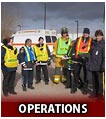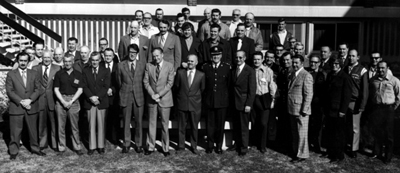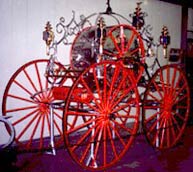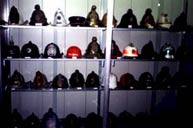




Home > Administration > Background


In 1913 the first two Assistant Fire Commissioners were appointed to assist the Fire Commissioner to serve the districts or communities in Manitoba. These were the forerunners of Emergency Services Officers of today and their numbers were increased as the duties and responsibilities of the Fire Commissioner were expanded. The Fires Prevention Act which, was assented to on Feb. 21, 1872, appointed the first Fire Commissioner and addressed only the prevention of prairie fires. This Act was gradually amended over time to meet the changing needs of the communities it was designed to protect.
The first Fire Commissioner's Regional School

Assistant Fire Commissioners respond to community requests by providing assistance in areas of Fire Investigation, Training, and Fire Inspections.
The first formal Mutual Aid Districts were created and enacted by municipal bylaw in 1975. Assistant Fire Commissioners were instrumental in assisting in the creation of these districts by attending many council and fire department meetings.
In 1976 each district had an Assistant Fire Commissioner appointed to provide services to them. Some Assistant Fire Commissioners had several districts and provided Training, Investigation, Inspections and Pub Ed services and attended Mutual Aid District meetings as requested by the districts. This year also saw the creation of the Manitoba Fire College and the Assistant Fire Commissioners also took on the responsibility of creating even more training courses.
1979 saw the installation of the first three air compressor stations, which has risen to a total of 42 to date. Starting in 1983, 60 mobile VHF radios have been purchased and distributed to Mutual Aid. The Office of the Fire Commissioner is still covering all related maintenance costs related to the compressors but the radios have been turned over to the districts.
The initiation of a Fire Service Instructor course presented to districts began an era of locally taught fire departments which is the basis of the training being presented to the fire service today.

The Manitoba Fire College opened its doors in 1985 and sparked an increase in the amount of courses being offered to the districts.
The forest fires in 1989 and 1990 saw the Assistant Fire Commissioners and all the fire suppression equipment available committed to the protection of the northern communities. The training incentive and equipment incentive pilot began in this year with $10,000 per district allotted to offset training cost for completed courses. The amount was later changed to $6,500 where it remains today.
The first of the high volume hose trailers was built and placed into service in 1990 with four others put in service by 1995.

Northern Training districts were created in 90/91 in order that they could participate in the training incentives. Assistant Fire Commissioner's name was changed to Fire Services Officer.
Responding to major incidents such as hazard material spills, floods, forest fires, multi casualty responses has resulted in the operational staff requiring more and more knowledge in order to assist in these areas. One offshoot of this is that the name has undergone another change to Emergency Services Officer, to meet the changes in the areas which fire departments now are challenging.